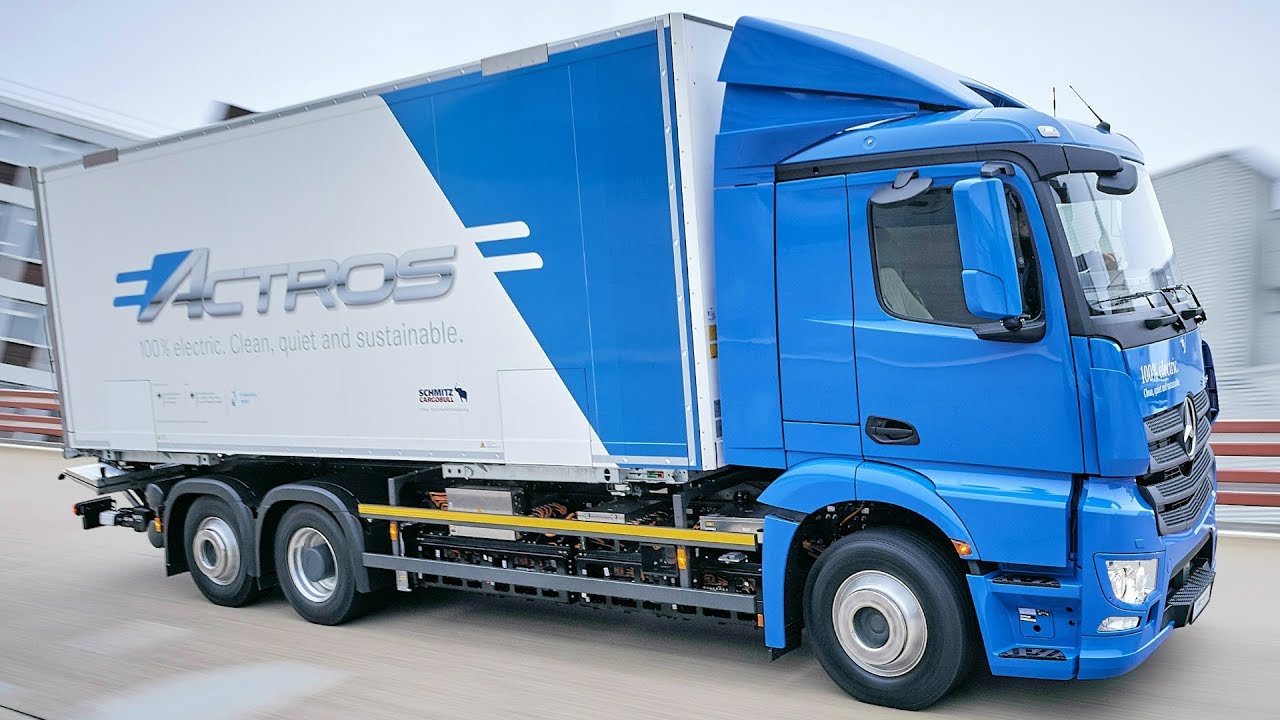2018 Mercedes eActros – All-electric Truck for the Heavy-Duty Distribution. 2018 Mercedes-Benz eActros – Drive, Interior and Exterior.
The basis for the eActros is provided by the frame of the Actros. Otherwise, however, the vehicle architecture has been configured specifically for an electric drive system, with a high proportion of specific components. The drive axle, for example, is based on the ZF AVE 130 that has already proved its worth as a low-floor portal axle in hybrid and fuel-cell buses from Mercedes-Benz and is now being fundamentally revised for the eActros. The axle housing has been completely redesigned and is mounted in a significantly higher position, thereby increasing the ground clearance to more than 200 mm. The drive system comprises two electric motors located close to the rear-axle wheel hubs. These three-phase asynchronous motors are liquid-cooled and operate with a nominal voltage of 400 volts. They generate an output of 125 kW each, with maximum torque of 485 Nm each. The gearing ratios convert this into 11 000 Nm each, resulting in driving performance on a par with that of a diesel truck.
The maximum permissible axle load stands at the usual 11.5 tonnes. The energy for a range of up to 200 km is provided by two lithium-ion batteries with an output of 240 kWh. These have already proved their worth in service with EvoBus GmbH – so can no longer be considered as prototypes. “Synergies within the Group like these allow us to pool our experiences, shorten development times and, of course, also save costs”, according to Stefan Buchner.
The batteries are accommodated in eleven packs, all in all: three of these are located in the frame area, the other eight are to be found underneath. For safety reasons, the battery packs are protected by steel housings. In the event of a collision, the mountings give way and deform, so diverting the energy past the batteries without damaging them. The high-voltage batteries do not just supply energy to the drive system, but to the vehicle as a whole. Ancillary components such as the air compressor for the braking system, the power steering pump, the compressor for the cab air-conditioning system and, where relevant, the refrigerated body, are also all electrically powered. Discharged batteries can be fully recharged within three to eleven hours, assuming a realistic charging capacity of 20 to 80 kW from a mobile charging device at a fleet depot. The charging standard used is the Combined Charging System, CCS. The LV on-board network made up of two conventional 12-volt batteries is charged from the high-voltage batteries via a DC-DC converter. This ensures that all relevant vehicle functions such as lights, indicators, brakes, air suspension systems and cab systems remain operational in the event of the high-voltage network failing or being switched off. The high-voltage network can only be activated if both LV (low-voltage) batteries are charged.
The development and testing of the heavy-duty electric trucks in distribution transport forms part of the project “Concept ELV²”, which is funded to varying extents by Germany’s Federal Ministry for the Environment (BMUB) and Federal Ministry of Economic Affairs and Energy (BMWi) to the tune of around ten million euros altogether. Areas covered by the funding plan include the investigation of the complex challenges involved in the development, assembly and operation of electric trucks.









